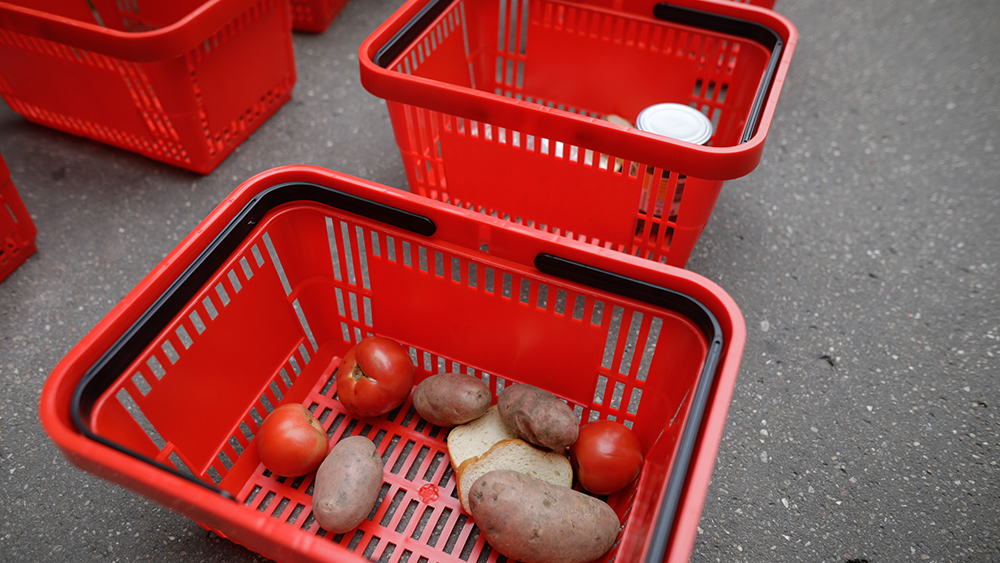Cooking oil’s price surge signals worsening global food inflation
02/10/2022 / By Kevin Hughes

Surging cooking oil prices is raising concerns that global food costs are heading for record highs as drought hampers production in South America, labor shortage hinders output in Malaysia and Indonesia bars exports to safeguard domestic supplies.
Palm oil, the world’s most consumed cooking oil, soared to another intraday record in Kuala Lumpur on Monday, February 7, bolstered by shipment restrictions in top grower Indonesia and a lingering worker shortage in Malaysian plantations.
Soybean oil traded near the topmost since June, while soybeans, from which the oil is derived, climbed to the prominent spot since May. Heat and drought have led to repeated reductions in appraisals for soybean crops in Brazil and Argentina. That may well be mirrored in decreased predictions for global supplies in the latest monthly report from the United States Department of Agriculture.
Global food costs rose nearer to a record in January, according to the latest data from the United Nations, as a result of more expensive vegetable oils and dairy products. The current increase in cooking oil prices could drive the monthly food index to a record when it is issued again in early March. Soaring fertilizer costs due to higher energy markets may also boost food prices. (Related: Global food prices climb to record highs thanks to “fallout from energy prices” amid skyrocketing oil.)
The rally on Monday came after the return of Chinese investors after a weeklong Lunar New Year holiday. Soybean meal futures in Dalian soared by the daily limit, while palm oil prices surged to the highest since 2008. In U.S. markets, money managers broadened their net bullish bets on soybean to the biggest in eight months in the week that ended Feb. 1, and on soybean oil to a 10-week high.
The price of soybean in Brazil rose over the past month as forecasts for the recent harvest were cut due to extreme heat and drought.
Cost of major vegetable oils rising
Costs for all major vegetable oils, which include soybean, rapeseed and sunflower seed oils, have risen since mid-2020, but palm oil has taken the impact because of its cheaper nature and wider availability.
The surge in palm oil price, driven by slower production due to weather and labor issues, has removed much of its traditional price advantage over other vegetable oils. Large-scale vegetable oil supplies related to demand are seen at 14-year lows in 2021-22, and an ample restoration of stocks could be at least a set of cycles away.
Near-term palm oil availability will likely aggravate as top exporter Indonesia recently declared mandatory domestic sales to control prices effectively. That is bad news for countries like India, the top palm importer, which cut import duties last October to deal with its own price hike.
It also provides pressure on competing vegetable oils, especially rapeseed oil, which should have a production rebound this year.
Among the four main global vegetable oils, palm oil records about 63 percent of annual exports. Soybean and sunflower seed oil account for 15 percent each and rapeseed oil seven percent.
Soybean oil has a bigger share of the production pool with 33 percent, next to palm oil which claims 40 percent. Rapeseed oil accounts for 15 percent and sunflower seed oil 12 percent.
Global palm oil output, for the most part, increase each year in response to higher demand, although any serious disruption can be felt for years across all vegetable oils.
About 84 percent of the world’s palm oil production takes place in Indonesia and Malaysia, where tropical weather systems can interrupt the flow of supply.
Stocks-to-use for the four primary vegetable oils were soaring around 11 percent, which was well above prior values during the early part of the previous decade. But it all changed in 2015 and 2016, with the stocks-to-use not returning to their previous levels.
El Nino, typified by warmer-than-normal surface waters in the equatorial Pacific Ocean, occurred in late 2014 and continued until early 2016 with its historic strength happening late 2015.
Although El Nino can cause drought in Southeast Asia, its effects on palm output can sometimes diminish because of the production process. Succeeding El Nino cycles caused 2015-16 global palm oil output to decline in the year for the first time since 1997-98.
Despite the production slip, global consumption has grown each year since 1997-98, and currently, production has jumbled to keep up with demand.
More related articles:
Food inflation in the US about to reach a tipping point.
12 Signs that food shortages are already here.
Watch the video below to know how to prepare for a soaring food inflation.
This video is from the Fearless Nation channel on Brighteon.com.
Follow Foodcollapse.com for the latest news on food shortages.
Sources include:
Submit a correction >>
Tagged Under:
Argentina, Brazil, chaos, cooking oil, Drought, El Nino, food collapse, food prices, food supply, grocery, harvest, Indonesia, inflation, Malaysia, palm oil, panic, products, South America, soybean, vegetable oils
This article may contain statements that reflect the opinion of the author
RECENT NEWS & ARTICLES
COPYRIGHT © 2017 DISASTER NEWS





















